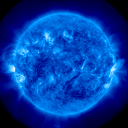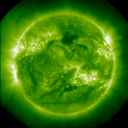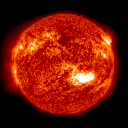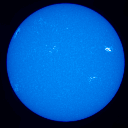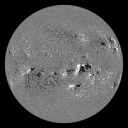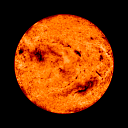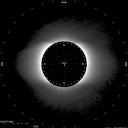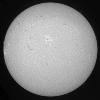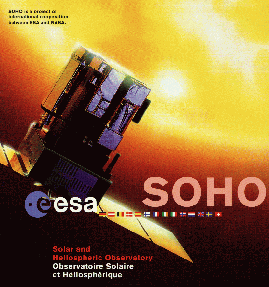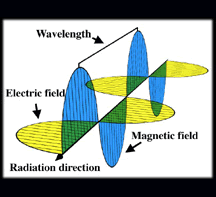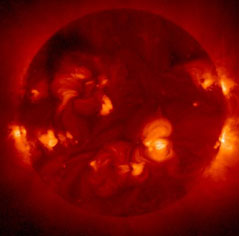Error finding ID 3046 in
Error finding content SELECT * FROM win_content WHERE PageID=3046 AND Element=3 AND (Level='high' OR Level='all') AND Lang='en'
Error finding element Video
Error finding ID 3046 in
Error finding content SELECT * FROM win_content WHERE PageID=3046 AND Element= AND (Level='high' OR Level='all') AND Lang='en'
Error finding element ImageSmall
Error finding ID 3046 in
Error finding content SELECT * FROM win_content WHERE PageID=3046 AND Element= AND (Level='high' OR Level='all') AND Lang='en'
Error finding element Video
Error finding ID 3046 in
Error finding content SELECT * FROM win_content WHERE PageID=3046 AND Element= AND (Level='high' OR Level='all') AND Lang='en'
Error finding element Title
Error finding ID 3046 in
Error finding content SELECT * FROM win_content WHERE PageID=3046 AND Element= AND (Level='high' OR Level='all') AND Lang='en'
Error finding page /sun/solar_atmosphere.html
Error finding page /sun/images/sun_em_emissions_locations_big_jpg_image.html
Error finding page /sun/Solar_interior/Sun_layers/Core/plasma_state.html
Error finding page /sun/atmosphere/corona.html
Error finding page /physical_science/physics/thermal/kelvin_temperature_scale.html
Error finding page /physical_science/magnetism/images/uv_spectrum_regions_big_gif_image.html
Error finding page /physical_science/physics/thermal/kelvin_temperature_scale.html
Error finding page /sun/spectrum/uv_iron_ions_fe_ix_eit171.html
Error finding page /sun/atmosphere/corona.html
Error finding page /space_missions/sun_space_weather/solar_dynamics_observatory.html
Error finding page /physical_science/magnetism/images/uv_spectrum_regions_big_gif_image.html
Error finding page /physical_science/physics/thermal/kelvin_temperature_scale.html
Error finding page /sun/spectrum/uv_iron_ions_fe_xii_eit195.html
Error finding page /sun/atmosphere/corona.html
Error finding page /space_missions/sun_space_weather/solar_dynamics_observatory.html
Error finding page /physical_science/magnetism/images/uv_spectrum_regions_big_gif_image.html
Error finding page /physical_science/physics/thermal/kelvin_temperature_scale.html
Error finding page /sun/spectrum/uv_helium_ions_he_ii_eit304.html
Error finding page /sun/solar_atmosphere.html
Error finding page /sun/atmosphere/chromosphere.html
Error finding page /sun/atmosphere/corona.html
Error finding page /space_missions/sun_space_weather/solar_dynamics_observatory.html
Error finding page /sun/images/sun_em_emissions_locations_big_jpg_image.html
Error finding page /physical_science/basic_tools/wavelength.html
Error finding page /physical_science/magnetism/em_visible_light.html
Error finding page /physical_science/magnetism/em_ultraviolet.html
Error finding page /sun/spectrum/uv_calcium_ions_ca_ii_k_393nm.html
Error finding page /sun/atmosphere/chromosphere.html
Error finding page /sun/images/sun_em_emissions_locations_big_jpg_image.html
Error finding page /physical_science/basic_tools/wavelength.html
Error finding page /physical_science/physics/atom_particle/atom.html
Error finding page /sun/atmosphere/chromosphere.html
Error finding page /sun/images/sun_em_emissions_locations_big_jpg_image.html
Error finding page /physical_science/magnetism/em_visible_light.html
Error finding page /physical_science/basic_tools/wavelength.html
Error finding page /physical_science/magnetism/images/visible_spectrum_waves_big_jpg_image.html
Error finding page /physical_science/magnetism/em_spectrum.html
Error finding page /sun/atmosphere/sunspots.html
Error finding page /sun/atmosphere/photosphere.html
Error finding page /sun/sun_magnetic_field.html
Error finding page /physical_science/magnetism/magnetic_field.html
Error finding page /space_missions/sun_space_weather/solar_dynamics_observatory.html
Error finding page /sun/images/sun_em_emissions_locations_big_jpg_image.html
Error finding page /physical_science/basic_tools/wavelength.html
Error finding page /physical_science/magnetism/em_infrared.html
Error finding page /physical_science/physics/atom_particle/atom.html
Error finding page /sun/atmosphere/chromosphere.html
Error finding page /sun/atmosphere/corona.html
Error finding page /physical_science/magnetism/em_visible_light.html
Error finding page /physical_science/magnetism/em_infrared.html
Error finding page /physical_science/basic_tools/wavelength.html
Error finding page /sun/solar_atmosphere.html
Error finding page /space_weather/space_weather.html
Error finding page /space_weather/space_weather.html
Error finding page /space_weather/sw_today/sw_today.html
Error finding page /space_weather/sw_today/sw_today.html
The Sun Today - Windows to the Universe
The Sun Today
Current and recent views of the Sun from observatories around the Earth and in space . Images are various wavelengths of visible light , ultraviolet , infrared , or X-ray emissions. Some pictures show the "surface " of the Sun; many others show material at specific heights and temperatures in the solar atmosphere .
Note: some images may be blank or "broken" at times; at night and on cloudy days (at least) for Earthbound observatories; at various intentional and accidental "down-times" for satellite-based solar telescopes.
X-ray image of the Sun showing superheated plasma in the corona at temperatures between 3 and 5 million kelvins . Image courtesy of HINODE/NASA/JAXA.
Extreme ultraviolet image of the Sun showing hot plasma at temperatures around 1,000,000 kelvins . These emissions come from ionized iron atoms (Fe IX and Fe X) in the lower corona . Image courtesy of NASA Solar Dynamics Observatory (SDO) Atmospheric Imaging Assembly (AIA).
Extreme ultraviolet image of the Sun showing hot plasma at temperatures around 1.5 million kelvins . These emissions come from ionized iron atoms (Fe XII) in the solar corona . Image courtesy of NASA Solar Dynamics Observatory (SDO) Atmospheric Imaging Assembly (AIA).
Extreme ultraviolet image of the Sun showing hot plasma at temperatures around 60,000 to 80,000 kelvins . These emissions come from ionized helium atoms (He II) in the transition region of the Sun's atmosphere , on the border between the chromosphere and the corona . Image courtesy of NASA Solar Dynamics Observatory (SDO) Atmospheric Imaging Assembly (AIA).
Violet/ultraviolet image of the Sun at a wavelength of 393 nm (on the border between purple visible light and ultraviolet radiation ). These emissions come from ionized calcium atoms (Ca II K) in the Sun's chromosphere . Image courtesy of HAO's Mauna Loa Solar Observatory.
Red light image of the Sun at a wavelength of 656.3 nm. These emissions come from hydrogen atoms in the lower part of the Sun's chromosphere , within 1,700 km of the Sun's "surface". Astronomers call this wavelength band the "hydrogen alpha" emission line. Image courtesy of Big Bear Solar Observatory/New Jersey Institute of Technology.
This visible light image of the Sun provides a view similar to what our eyes would see. The light in this image has a wavelength of 6,768 Ångstroms (the red portion of the visible spectrum ) and is emitted by nickel atoms. This is a good view for detecting sunspots . Image courtesy of SOHO (ESA & NASA).
This magnetogram of the Sun's "surface " shows the strengths of magnetic fields on the Sun . Dark areas have south polarity , while bright white regions have north polarity. Image courtesy of NASA Solar Dynamics Observatory (SDO) Helioseismic and Magnetic Imager (HMI).
Infrared (IR) image of the Sun at a wavelength of 10,830 ångströms (1,083 nm). These IR emissions come from helium atoms (He I) in the Sun's chromosphere . Image courtesy of the National Solar Observatory/Kitt Peak, NOAO.
Image of the Sun's corona in red visible light and infrared radiation at wavelengths between 700 and 950 nm (7,000-9,500 ångströms). This coronagraph has a central black disk that covers the "body" of the Sun, creating an artificial eclipse and revealing the solar atmosphere . Image courtesy of HAO's Mauna Loa Solar Observatory.
Space Weather
Space Weather Today
You might also be interested in: Observations by Earth-orbiting satellites and other spacecraft have revolutionized our understanding of the Sun and space weather in recent years. A host of spacecraft provide a flood of information about
...more The wavelength of a wave describes how long the wave is. The distance from one crest to the next, or from one trough to the next, of a wave is its wavelength. Water waves in the ocean, sound waves in air,
...more X-rays are a high-energy type of electromagnetic (EM) radiation. X-ray radiation has a much shorter wavelength than visible light, so X-ray photons have much higher energies than photons of light. X-rays
...more

